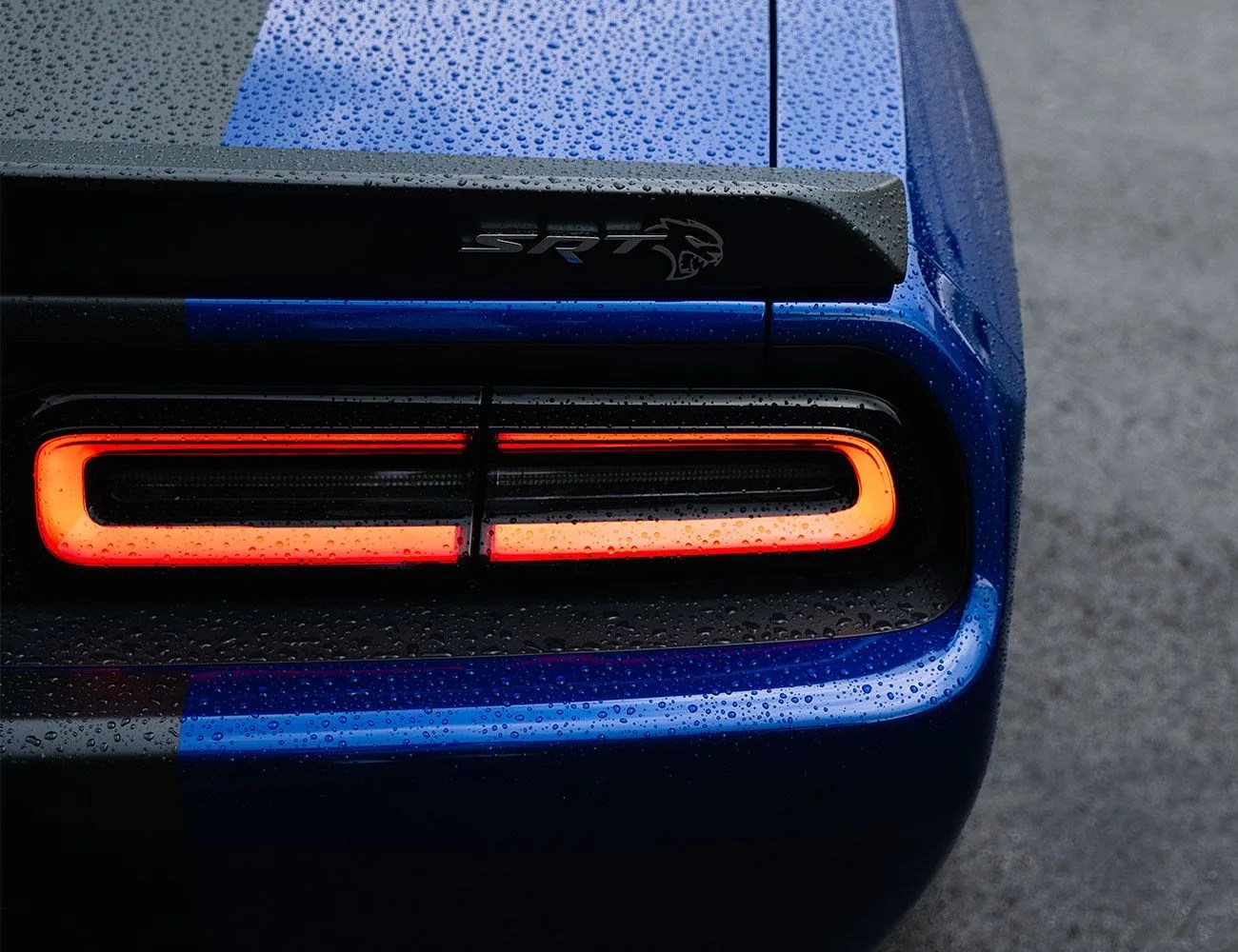4 photos
Before driving a selection of Dodge’s latest Challengers, I fondly looked back on my past experiences with the stout two-door, particularly the SRT Hellcat. The first time I was tossed the keys to the supercharged tire killer I spent the majority of my week exploring remote roads outside of Los Angeles, charting my course mostly from gas station to gas station. Around town, I let the rear end step out whenever traffic conditions allowed, which meant lots of driving late night into the early morning hours. There was even a day trip to El Mirage dry lake bed where I intended to hunt down that 199 mph top speed, but only managed 179 – not bad for a manual transmission on a loose surface.
“I’m here for a good time, not a long time” I declared as I trotted over to a 2019 Challenger SRT Hellcat Redeye Widebody, which as it turns out is more of a mouthful than it is a handful. A surprisingly compliant chassis is just one of the many enjoyable aspects of Dodge’s seemingly brutal top-dog, as was demonstrated throughout my day driving it from Portland, Maine to Club Motorsports in Tamworth, NH and back. My past experiences with the Challenger in wide open spaces out west were a far cry from this go-round that was mostly cruising through quaint little towns like the one where I grew up in Southern Vermont. Still, even on the thin strips of asphalt that qualify as roads in parts of rural New England, the Redeye Widebody remained enjoyable and entertaining. However, it should come as no surprise that once the car is turned loose on a track, that’s where its capability can be fully appreciated.
The Good: When it comes to the Challenger overall, you’re truly spoiled for choice, starting with the available color spectrum: IndiGo Blue and Plum Crazy, Destroyer Grey and (my personal favorite) F8 Green.
The list of attractive qualities for the Hellcat Redeye specifically is also lengthy, but it’s the hardware and tricks I enjoy the most. First, there’s the new dual-snorkel hood (also found on the regular ol’717-hp Hellcat) that’s fully functional, wolfing down as much air as possible to feed the 2.7-liter supercharger borrowed from the Demon. In addition to the new hood, the Redeye makes use of a duct at the center of the inner driver side headlamp and a new inlet near the wheel liner to bring air-flow up 18 percent over last year’s Hellcat.
Keeping the high output V8 and the industry’s largest supercharger cool is what allows it to deliver up to 3.9 psi of boost at launch and max out at 14.5 psi. Assisting the air wrangling elements is the SRT Power Chiller and After-Run Chiller. The former lowers intake air temperature by sending A/C refrigerant to a chiller unit; then, it’s further cooled by air passing through the front radiator. Before that, frosty coolant flows to the heat exchangers in the supercharger. The latter minimizes the effects of heat soak by keeping the engine’s cooling fan and low-temperature circuit coolant pump running after the car is off. Additionally, you can track the supercharger coolant temperature, along with a myriad of other things, through the SRT Performance Pages included in the industry standout UConnect infotainment system. This is crucial information to have if you’re attempting to squeeze every bit of performance out of the car and gain an edge over your competition.






